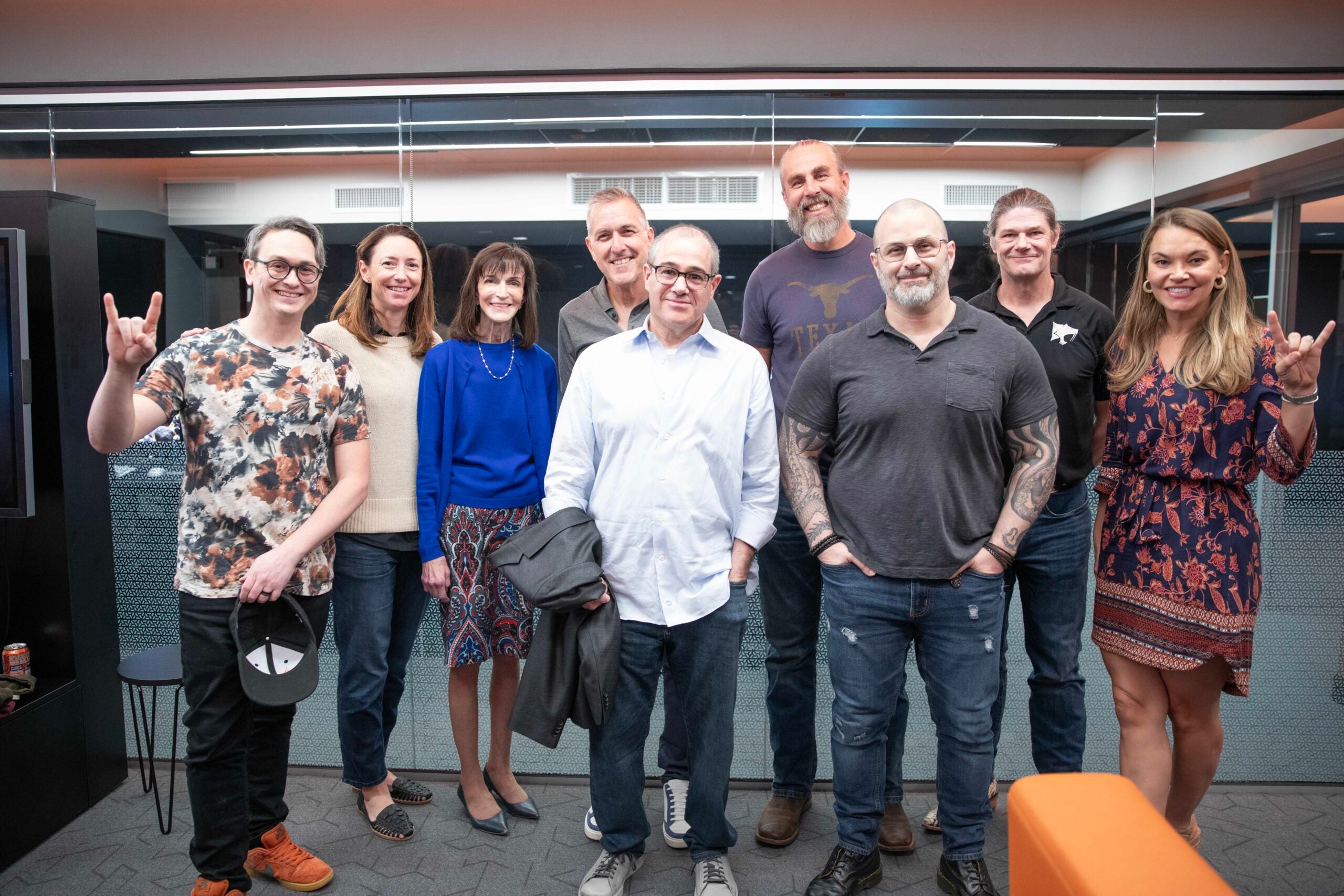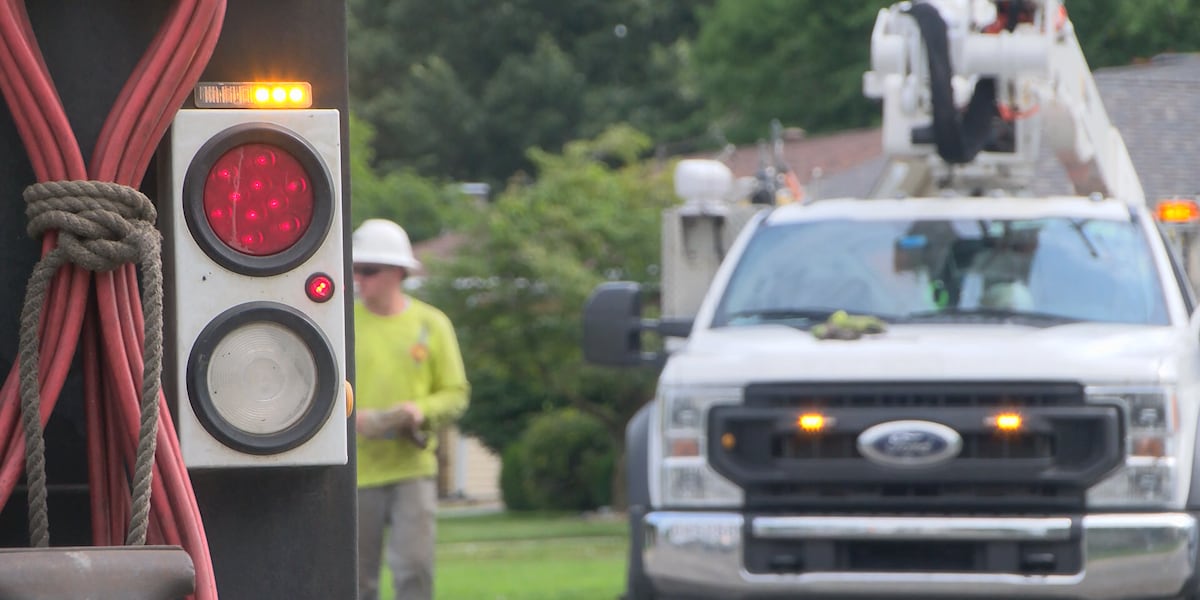Finance
How Blockchain Technology Is Impacting Financial Planning

Blockchain technology, the technology that keeps cryptocurrency secure, has come a long way since its inception. Today, the technology doesn’t just power popular cryptos like bitcoin and ethereum — it is also the vehicle for storing and trading non-fungible tokens (NFTs) and supporting the tokenization of real estate and fine art.
Explore More: 5 Expert-Recommended Alternative Investments: How They Work and When To Invest
Read Next: 9 Things You Must Do To Grow Your Wealth in 2024
Blockchain is faster and more secure than traditional transactional methods and is playing a tremendous role in financial planning and wealth transfer, which only promises to grow with time. For instance, the market for tokenized assets could reach $2 trillion to $4 trillion by 2030, according to a recent McKinsey & Company report. This is a far cry from numbers of $10 trillion previously projected by Boston Consulting Group. McKinsey reported that we may see the most growth in assets like mutual funds, bonds, ETFs and loans.
“Blockchain technology is still in early days and requires a material amount of integration with existing processes and standards,” Anthony Moro, CEO of Provenance Blockchain Labs, told CoinDesk. “Most institutions recognize tokenization needs to be a large part of their business moving forward, but technical integration is where the rubber meets the road.”
Here’s a look at the role blockchain might play in key areas of financial planning.
It’s Going Viral: Want to Retire Rich? Suze Orman Says You’re Missing This Key Money Move
What Is Blockchain Technology?
First, let’s back up for a quick review of exactly what blockchain is and how it works.
Blockchain is, essentially, a permanent, shared record book in digital form, or a decentralized ledger of transactions conducted over peer-to-peer networks. The ledger tracks transactions and also aims to build a consensus about whether the transaction data is valid. With blockchain technology, users can confirm transactions without requiring a central clearing authority.
Check Out: 13 Cheap Cryptocurrencies With the Highest Potential Upside for You
Why Is Blockchain Important?
Blockchain aims to deliver stored information immediately and transparently on a ledger that can be accessed only by network members. Members share a single view of orders, payments, accounts and other information, which helps build trust, efficiency and financial opportunities.
Blockchain eliminates the need for central recordkeeping, and because the ledger is made public, everyone involved can easily gain access. This transparency helps accelerate the verification process, reduce the need for back-office functions, and promote security.
How Does Blockchain Work?
One key element of blockchain is that every transaction requires a security measure to protect the identities of transacting parties. To secure transactions of bitcoin and other cryptocurrencies, two keys are required — a private and a public key.
The public key is shared permanently in the log. It can be used to sign and encrypt a message. The private key is only known to users and acts as a pin code. A recipient uses this key to decrypt a transaction. The technology introduces speed, efficiency, security and reduced costs, albeit at the expense of tremendous environmental impact.
Processing transactions on the blockchain requires sophisticated computers that tend to be energy hogs. If this drawback can be addressed, we will undoubtedly see blockchain play an even larger role in financial planning. Here are a few ways it’s being used today.
Tokenization of Real Estate, Commodities, Fine Art and Illiquid Assets
Investors in fine art, commodities and real estate face several challenges. When you invest in art, you need a place to store and preserve the pieces, as well as insurance to protect it. By creating NFTs of artwork, these assets can be easily tradeable. They can even be duplicated, although this will diminish their ultimate value.
Tokenizing real estate via blockchain technology enables investors to deal in fractional shares, making investing in high-rise apartments or other commercial real estate more accessible to retail investors.
Streamlining Loan Funding and Dividend Payments
Smart contracts operate on the blockchain, with the terms of the agreement written into the code. Smart contracts eliminate the need for intermediaries for loan issuance or dividend payments. Blockchain can facilitate faster loan funding, as well as automatic dividend payments at faster speeds and lower costs.
Facilitating Faster Cross-Border Transactions
Because blockchain transactions are deregulated — without a central government authority behind them — cross-border transactions can take place quickly and seamlessly, with lower fees, according to a LinkedIn Pulse article by Charles Lau of Digital Perpetual.
P2P Lending Platforms and Crowdfunding
Likewise, blockchain is playing a role in facilitating peer-to-peer lending and crowdfunding transactions. Its security, transparency and speed can facilitate transactions at faster speeds and lower costs, with a smaller risk of fraud.
Whether you’re launching a business or seeking to invest in start-ups, blockchain can make it easier and more accessible.
Final Note
As much as blockchain has evolved this century, the technology is still in its relative infancy. As younger generations explore the possibilities, cryptocurrency, NFTs and other tokenized assets could play a large role in the transfer of generational wealth.
More From GOBankingRates
This article originally appeared on GOBankingRates.com: How Blockchain Technology Is Impacting Financial Planning

Finance
UK Finance Minister to Call for Defence Spending Cooperation at EU Meeting
Finance
Blockchain: The Operating System For Global Finance

Block chain network technology
getty
Blockchain infrastructure ↔ Traditional finance
Digital assets ↔ Real-world usage
Startups and protocols ↔ Institutional systems
In November 2024, while crypto headlines fixated on volatility, the European Investment Bank (EIB) issued a €100 million digital bond on HSBC’s Orion platform—settling the same day using wholesale central bank digital currency (wCBDC) tokens issued by the Banque de France. Days later, Goldman Sachs announced plans to spin out its GS DAP® blockchain platform into an industry-owned utility. Neither event made headlines, yet both signal a profound shift in global finance. These aren’t innovation lab pilots—they’re strategic moves by financial titans rebuilding the core infrastructure powering traditional finance. Blockchain isn’t disrupting Wall Street; it’s becoming its operating system. While headlines obsess over Bitcoin, the real shift is happening quietly. Institutions are laying tracks beneath the surface—moving trillions, settling trades, and weaving decentralization into the foundations of financial infrastructure.
This is about the mechanics of how money moves—legacy systems controlled by intermediaries, burdened by high costs and delays, or blockchain rails enabling direct, peer-to-peer, atomic settlement. By embedding itself into the plumbing of global finance, blockchain is rewiring the system from within—driving the most significant transformation since electronic trading replaced floor brokers. Just as cloud computing became the invisible backbone of digital ecosystems, blockchain is rapidly becoming the core of global finance.
That transformation is already shaping tomorrow’s winners and losers. Whether you’re investing, leading a company, or building financial products, understanding the ecosystem is essential to smart decision-making. It comes down to grasping how these once-separate worlds are converging—and recognizing the key players making it all work. This isn’t theoretical. It’s actively reshaping competitive dynamics, creating new opportunities, and rendering old models obsolete.
The Institutional Shift: From Resistance to Adoption
Once dismissed as speculative, blockchain is now a strategic priority for institutions like JPMorgan, BlackRock, and Goldman Sachs. Blockchain is quietly reengineering a financial system that supports more than $100 trillion in global capital markets and moves trillions daily. The shift has been deliberate and strategic—years in the making, but now rapidly gaining traction. What was once seen as a fringe experiment is now deeply embedded in traditional financial infrastructure. Institutions are embracing blockchain not for speculation but for cost savings through improved efficiency—streamlining operations, eliminating intermediaries through peer-to-peer (P2P) transactions, and enabling atomic settlement. JPMorgan moves trillions via JPM Coin. BlackRock issues Bitcoin ETFs and integrates blockchain into its $10 trillion portfolio infrastructure. Goldman Sachs, once cautious, is now leaning in—expanding its digital assets desk and signaling that blockchain isn’t a side bet; it’s part of the long game. And rather than being sidelined, Visa and Mastercard are weaving blockchain into their payment systems—Visa alone processed billions of dollars in crypto transactions in 2024. This isn’t capitulation—it’s evolution. These giants are using blockchain to streamline systems, improve liquidity, and boost transparency.
Still, some of the most transformative innovations are coming from agile startups—solving inefficiencies in payments, trading, and consumer incentives. The companies mentioned illustrate broader trends, not endorsements or prescribed winners. They offer a glimpse into a larger shift—one driven by thousands of startups, protocols, and infrastructure providers reshaping the foundation of global finance.
The Modular Architecture of the New Financial Stack
Unlike traditional finance’s siloed systems, blockchain is built for composability—where financial applications plug into one another like Lego bricks, driving rapid innovation and more connected services. This modular architecture enables developers to stack functions—trading, lending, staking, identity, settlement—into seamless user experiences. It’s most visible in DeFi, where protocols like Aave, Uniswap, and Lido integrate natively, accelerating innovation without the friction of closed systems. But composability extends beyond DeFi. As tokenized assets, on-chain identity, and payment networks evolve, the same plug-and-play architecture is beginning to reshape how institutions build and deploy financial products and infrastructure.
Composability doesn’t just speed up product cycles—it unlocks entirely new value chains. A lending app can tap into yield protocols or tokenized collateral instantly—without the bottlenecks of backend integrations or clearinghouse approvals. In this emerging financial stack, the winners aren’t just fast—they’re interoperable.
Concept of mobile payments. Wallet connected with mobile phone.
getty
Crypto’s Payment Bridge
The structural limitations of crypto as a medium of real-world payment have long hindered its adoption. Digital assets remained siloed in wallets and exchanges, cut off from everyday financial systems. But that barrier is starting to break down—not by replacing payment giants, but by building infrastructure that bridges the two worlds. In fact, payment giants like Mastercard and Visa have accelerator programs focused on integrating targeted crypto solutions that can plug into existing systems, creating corridors between traditional and decentralized financial systems.
Hong Kong-based Aurum exemplifies this approach, enabling users to fund accounts with USDT and spend in local currencies. Its ecosystem offers bots, payment cards, staking, NFT licenses, and a Web3 wallet with low fees and cashback rewards. With $12M in funding, Aurum delivers institutional-grade trading and payment infrastructure powered by advanced AI, complementing traditional financial networks. Former Binance executive Bryan Benson now leads Aurum Exchange, bringing expertise in scaling crypto platforms across emerging markets.
The endgame? A world where crypto wallets function seamlessly with traditional payment systems, making digital assets as spendable as cash—without friction.
Trading’s Transparency Upgrade
For decades, financial markets have been plagued by opacity, insider advantages, and inefficiencies. The blockchain era is changing that dynamic. Institutions like State Street ($43T AUM) and BNY Mellon ($46.7T in assets under custody), with their extensive trading operations and market influence, are already implementing blockchain-based trade settlement solutions, ensuring real-time transaction verification and eliminating counterparty risks.
In the retail trading landscape, Spotware’s cTrader stands as a notable example of transparency while delivering sophisticated trading infrastructure. Built on its Traders First™ principles, cTrader aims to establish high standards for fairness, transparency, and security—tackling long-standing industry challenges and helping to level the playing field for all participants. The platform’s technology handles millions of transactions daily, connecting over 8 million traders and more than 250 brokers and prop firms to global markets.
Specialized infrastructure providers power this shift—the hidden backbone behind evolving trading systems. These providers don’t serve end users directly—they power those who do, underpinning the next generation of financial infrastructure. Fireblocks secures over $4 trillion in digital assets for institutions, ensuring transparent custody and seamless settlement. Chainlink delivers tamper-proof price data to more than 1,900 projects, forming the foundation of reliable price discovery. Circle’s USDC moves across exchanges, wallets, and payment systems, enabling instant, transparent fund transfers. Together, these firms are becoming the “essential middleware” layer of global finance—quietly powering billions in daily activity.
Beyond efficiency, blockchain is redefining who gets to participate in wealth creation.
Democratized Investment: Blockchain’s Bridge to Real-World Assets
Blockchain’s most powerful shift may be this: turning real-world value into liquid, on-chain capital—making static assets move, trade, and work for more people than ever before.
Tokenization is fast becoming the gateway to unlocking trillions in dormant capital. By converting assets like treasury bills, real estate, and private credit into blockchain-based tokens, platforms are transforming illiquid markets into accessible, tradable units. The impact? Fractional ownership, 24/7 settlement, and borderless access.
Major asset managers such as Franklin Templeton, BlackRock, Goldman Sachs, and HSBC are leading this transformation by developing tokenized investment products. Their participation lends institutional credibility to this emerging market, much like ETFs did for equities decades ago. Similarly, financial institutions like JPMorgan and State Street are laying the groundwork to bring traditional assets on-chain, recognizing tokenization’s far-reaching benefits.
Tokenized assets are projected to reach $2 trillion by 2030, led by cash deposits, bonds, mutual funds, and loans. Their appeal? Mobility, real-time settlement, programmability, and transparency—infused into markets once defined by slow processes, siloed systems, and rigid structures.
8lends by Maclear exemplifies this trend, offering USDC-backed loans to vetted businesses, making passive investing more accessible. Their platform combines blockchain transparency with the familiarity of traditional finance, eliminating cumbersome procedures and accreditation requirements. Smart contracts automate the entire process, delivering predictable returns with complete on-chain visibility.
This represents a foundational shift in financial infrastructure. Tokenization is not only expanding access to investment opportunities—it’s reducing friction, unlocking liquidity, and streamlining capital flows across the global economy.
The New Financial Operating System
The future of finance won’t be defined by crypto replacing banks or banks neutralizing crypto. It will emerge at their intersection—where the trust, scale, and regulatory expertise of traditional institutions fuse with the transparency, efficiency, and programmability of blockchain technology. The boundary between these worlds isn’t just blurring—it’s beginning to vanish.
Like the internet before it, blockchain is gradually disappearing into the background—becoming the invisible rails on which global finance runs. The future of money is being written in code. The biggest winners won’t be those who merely accumulate tokens—but those who understand blockchain as foundational infrastructure. As blockchain dissolves into the conduits of global finance, it’s becoming the architecture through which value will move, scale, and settle in the decade ahead.
Finance
2025 End of Session Wrap-Up: Finance
The segments below provide a brief overview of MACo’s work on finance policy in the 2025 General Assembly.
Maryland’s 447th legislative session convened amidst a substantial concern over the State’s fiscal situation, with weakened revenues and cost increases for many services at every level of government. Despite the budgetary limitations, many policy issues received a full debate, with many resolutions arising from the 90-day annual process. MACo’s Legislative Committee guided the association’s positions on hundreds of bills, yielding many productive compromises and gains spanning counties’ uniquely broad portfolio.
Follow these links for more coverage on our Conduit Street blog and Legislative Database.
![]() MACo supported HB 498/SB 427 – Economic Development – Delivering Economic Competitiveness and Advancing Development Efforts (DECADE) Act with amendments. This bill proposed a comprehensive restructuring of Maryland’s economic development programs to centralize funding and policy decisions and shift priorities toward targeted industries. Counties requested amendments to preserve local flexibility, protect proven incentive programs, maintain meaningful input in funding decisions, and ensure workforce development strategies align with local and regional priorities. This bill did not pass in the 2025 session.
MACo supported HB 498/SB 427 – Economic Development – Delivering Economic Competitiveness and Advancing Development Efforts (DECADE) Act with amendments. This bill proposed a comprehensive restructuring of Maryland’s economic development programs to centralize funding and policy decisions and shift priorities toward targeted industries. Counties requested amendments to preserve local flexibility, protect proven incentive programs, maintain meaningful input in funding decisions, and ensure workforce development strategies align with local and regional priorities. This bill did not pass in the 2025 session.
Bill Information | MACo Coverage
![]() MACo supported HB 17/SB 340 – Internet Gaming – Authorization and Implementation with amendments. This bill would have authorized the State Lottery and Gaming Control Commission (SLGCC) to license video lottery operators to conduct and operate internet gaming in Maryland. Counties requested amendments to include measures that protect existing revenue streams and maintain the effectiveness of local impact grants. This bill did not pass in the 2025 session.
MACo supported HB 17/SB 340 – Internet Gaming – Authorization and Implementation with amendments. This bill would have authorized the State Lottery and Gaming Control Commission (SLGCC) to license video lottery operators to conduct and operate internet gaming in Maryland. Counties requested amendments to include measures that protect existing revenue streams and maintain the effectiveness of local impact grants. This bill did not pass in the 2025 session.
Bill Information | MACo Coverage
![]() MACo supported HB 637 – Transportation – Highway User Revenues Capital Grants – Calculation. This bill would have fully restored Highway User Revenues (HUR) to local governments and finally corrected a long-standing imbalance in Maryland’s transportation funding. This bill did not pass in the 2025 session.
MACo supported HB 637 – Transportation – Highway User Revenues Capital Grants – Calculation. This bill would have fully restored Highway User Revenues (HUR) to local governments and finally corrected a long-standing imbalance in Maryland’s transportation funding. This bill did not pass in the 2025 session.
Bill Information | MACo Coverage
![]() MACo submitted a letter of information on SB 935 – Transportation – Regional Authorities – Established. This bill proposed Regional Transportation Authorities and new transportation-related surcharges to support transportation infrastructure. MACo submitted a letter of information urging the Committee to weigh key policy considerations. This bill did not pass in the 2025 session.
MACo submitted a letter of information on SB 935 – Transportation – Regional Authorities – Established. This bill proposed Regional Transportation Authorities and new transportation-related surcharges to support transportation infrastructure. MACo submitted a letter of information urging the Committee to weigh key policy considerations. This bill did not pass in the 2025 session.
Bill Information | MACo Coverage
![]() MACo submitted a letter of information on HB 1370/SB 881 – Transportation – Regional Transportation Authorities. This bill proposed Regional Transportation Authorities and new transportation-related surcharges. This bill did not pass in the 2025 session.
MACo submitted a letter of information on HB 1370/SB 881 – Transportation – Regional Transportation Authorities. This bill proposed Regional Transportation Authorities and new transportation-related surcharges. This bill did not pass in the 2025 session.
Bill Information | MACo Coverage
![]() MACo supported HB 846 – Transportation Access and Revenue Act with amendments to address the state’s chronic transportation funding shortfall and enable counties to invest in safe, equitable, and sustainable transportation projects that reduce congestion, enhance communities, and strengthen the economy. This bill did not pass in the 2025 session.
MACo supported HB 846 – Transportation Access and Revenue Act with amendments to address the state’s chronic transportation funding shortfall and enable counties to invest in safe, equitable, and sustainable transportation projects that reduce congestion, enhance communities, and strengthen the economy. This bill did not pass in the 2025 session.
Bill Information | MACo Coverage
For more finance-related legislation tracked by MACo during the 2025 legislative session.
-

 News1 week ago
News1 week agoSupreme Court Rules Against Makers of Flavored Vapes Popular With Teens
-

 News1 week ago
News1 week agoNYC Mayor Eric Adams' corruption case is dismissed
-

 Technology1 week ago
Technology1 week agoHere’s how you can preorder the Nintendo Switch 2 (or try to)
-

 News1 week ago
News1 week agoTrump’s ‘Liberation Day’ Tariffs Are Coming, but at a Cost to U.S. Alliances
-

 News1 week ago
News1 week agoTrump to Pick Ohio Solicitor General, T. Elliot Gaiser, for Justice Dept. Legal Post
-

 Business1 week ago
Business1 week agoMarkets Remain Uneasy as Trump Prepares Sweeping ‘Reciprocal’ Tariffs
-

 Politics1 week ago
Politics1 week agoFBI flooded with record number of new agent applications in Kash Patel's first month leading bureau
-

 World1 week ago
World1 week ago‘A historic moment’: Donald Trump unveils sweeping ‘reciprocal’ tariffs




















